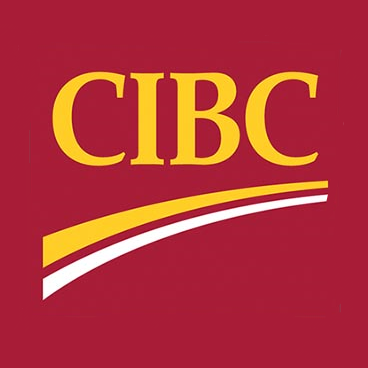Canadian Imperial Bank of Commerce (CM) Q3 2024 Earnings Call Highlights: Strong Financial ...

Adjusted Net Income: $1.9 billion, increased 28% year-over-year.
Adjusted Earnings Per Share (EPS): $1.93.
Adjusted Return on Equity (ROE): 14%.
Revenue: $6.6 billion, up 12% year-over-year.
Net Interest Income (NII): Up 14%, excluding trading.
Non-Interest Income: $3.1 billion, up 17% year-over-year.
Common Equity Tier 1 (CET1) Ratio: 13.3%.
Liquidity Coverage Ratio (LCR): 126%.
Provisions for Credit Losses: $483 million, down from $514 million last quarter.
Canadian P&C Net Interest Margin (NIM): 267 basis points, up 4 basis points.
US Segment NIM: 342 basis points, stable from the prior quarter.
Personal and Business Banking Net Income: $633 million, increased 20% year-over-year.
Canadian Commercial Banking and Wealth Management Revenue: $1.4 billion, up 7%.
US Commercial Banking and Wealth Management Net Income: US $163 million, significantly up from the prior year.
Capital Markets and Direct Financial Services Revenue: $1.5 billion, up 9% year-over-year.
Release Date: August 29, 2024
For the complete transcript of the earnings call, please refer to the full earnings call transcript.
Positive Points
Canadian Imperial Bank of Commerce (NYSE:CM) reported strong core results with an adjusted net income of $1.9 billion and earnings per share of $1.93, demonstrating continued momentum and consistency in execution.
The bank's capital liquidity positions are robust, with a CET1 ratio of 13.3% and a 126% LCR, both well above regulatory and internal minimums, allowing for a normal course issuer bid for 2% of outstanding shares.
Canadian Imperial Bank of Commerce (NYSE:CM) achieved an adjusted return on equity of 14%, reflecting improvements in core business momentum.
The Canadian wealth business performed well, with a 20% increase in assets under administration and leading mutual fund net sales within the Canadian Bank Group.
The bank made significant progress in leveraging AI as a strategic enabler, launching a pilot of CIBC AI and other tools to enhance productivity and client service.
Negative Points
The bank's US commercial real estate portfolio continues to face challenges, although significant progress has been made in downsizing impaired balances.
Loan growth in Canadian banking was slow, with only a 1% increase, attributed to a cautious approach and selective client engagement.
Operating expenses grew by 6%, driven by performance-based compensation and strategic investments, which could pressure future operating leverage.
The bank's US segment faces elevated expense growth due to ongoing infrastructure investments, impacting short-term profitability.
Concerns remain about the macroeconomic environment, particularly unemployment rates, which could impact credit performance and provisioning.
Q & A Highlights
Q: Have we moved past concerns around higher rates impacting the Canadian consumer and economic activity? A: Victor Dodig, President and CEO, noted that sentiment is improving, especially with commercial clients, but consumer clients remain tentative. More rate cuts are expected to solidify positive sentiment, which would be encouraging for future business. Frank Guse, Chief Risk Officer, added that while unemployment remains a headwind, interest rates will eventually have a positive impact, though this will lag.
Q: Can you provide insight into capital allocation opportunities in Canada and the US? A: Victor Dodig emphasized a focus on organic growth and premium ROE. The bank prioritizes organic growth, dividend growth, share buybacks, and opportunistic tuck-in M&A. In the US, the bank is shifting focus from commercial real estate to C&I loans, aiming for strategic growth.
Q: Why is Canadian banking loan growth slower compared to deposit growth? A: Hratch Panossian, CFO and Head of Enterprise Strategy, explained that the bank is focusing on building deeper client relationships rather than just growing loans or deposits. The strategy is to win with clients who value a deeper relationship, leading to higher revenue and ROE. Jon Hountalas, Group Head - Canadian Banking, added that the bank was cautious with commercial lending, but expects higher loan growth as confidence increases.
Q: Can you explain the tax adjustment backed out of adjusted earnings? A: Robert Sedran, CFO, clarified that the adjustment relates to the change in dividends received deduction legislation. The adjustment in Q3 reverses the benefit recognized in Q1 and Q2, resulting in a zero impact on a year-to-date basis.
Q: What is the outlook for credit card customer health and renewal wave concerns? A: Frank Guse stated that credit card customer health remains strong, with utilization and payment rates favorable compared to pre-pandemic levels. Regarding the renewal wave, while higher rates provide some discomfort, they are manageable, and the bank continues to monitor the situation closely.
Q: What needs to happen to achieve a 16%+ ROE target? A: Victor Dodig outlined that deeper client relationships, connectivity across business units, operating CET1 in the 12.5%+ range, and scaling technology investments are key to achieving a premium ROE. The focus is on consistent execution and reducing business friction to improve ROE over time.
Q: How long will the elevated expense growth in the US continue before achieving positive operating leverage? A: Shawn Beber, Group Head - U.S. Region, explained that the expense growth is part of a long-term strategy to enhance client experience and meet regulatory expectations. While the investment will continue, the pace of expense growth is expected to moderate, with a medium-term goal of achieving positive operating leverage.
Q: What factors contributed to the treasury activities benefiting NII this quarter? A: Robert Sedran noted that falling rates and effective positioning and hedging of the balance sheet contributed to the treasury gains. Additionally, market-related items and a revaluation of a funding vehicle added to the revenue, though these gains are not expected to be consistent every quarter.
For the complete transcript of the earnings call, please refer to the full earnings call transcript.
This article first appeared on GuruFocus.